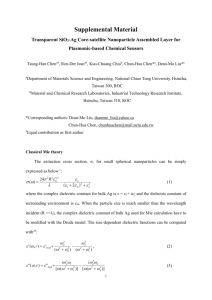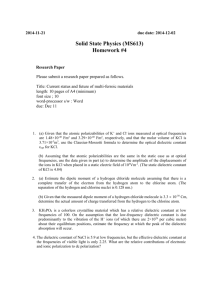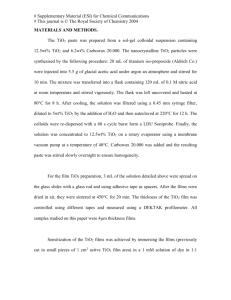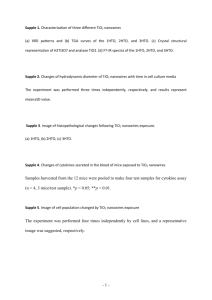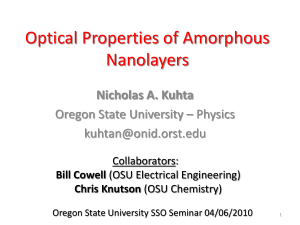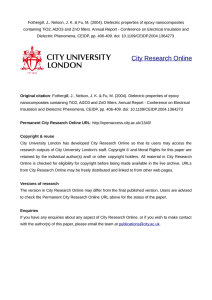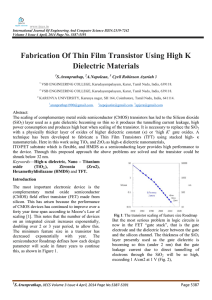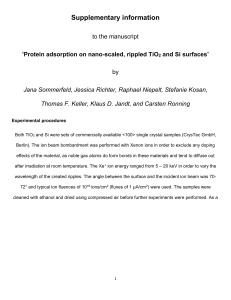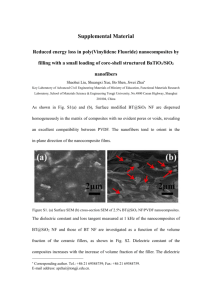jace13623-sup-0001-DataS1
advertisement
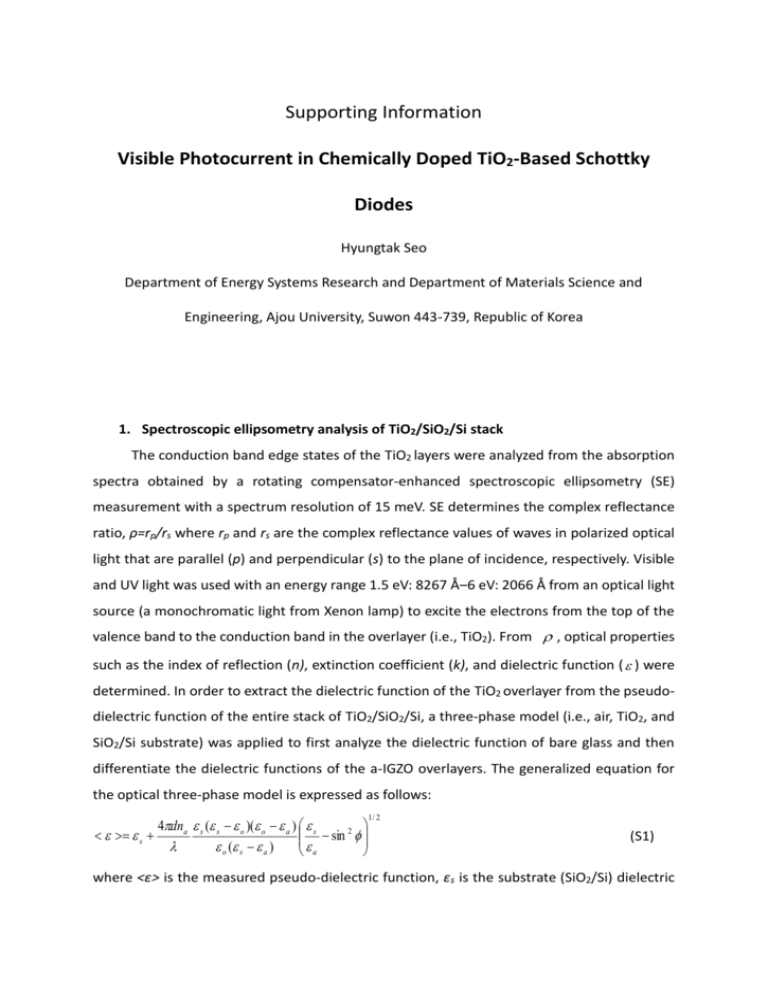
Supporting Information Visible Photocurrent in Chemically Doped TiO2-Based Schottky Diodes Hyungtak Seo Department of Energy Systems Research and Department of Materials Science and Engineering, Ajou University, Suwon 443-739, Republic of Korea 1. Spectroscopic ellipsometry analysis of TiO2/SiO2/Si stack The conduction band edge states of the TiO2 layers were analyzed from the absorption spectra obtained by a rotating compensator-enhanced spectroscopic ellipsometry (SE) measurement with a spectrum resolution of 15 meV. SE determines the complex reflectance ratio, ρ=rp/rs where rp and rs are the complex reflectance values of waves in polarized optical light that are parallel (p) and perpendicular (s) to the plane of incidence, respectively. Visible and UV light was used with an energy range 1.5 eV: 8267 Å–6 eV: 2066 Å from an optical light source (a monochromatic light from Xenon lamp) to excite the electrons from the top of the valence band to the conduction band in the overlayer (i.e., TiO2). From , optical properties such as the index of reflection (n), extinction coefficient (k), and dielectric function ( ) were determined. In order to extract the dielectric function of the TiO2 overlayer from the pseudodielectric function of the entire stack of TiO2/SiO2/Si, a three-phase model (i.e., air, TiO2, and SiO2/Si substrate) was applied to first analyze the dielectric function of bare glass and then differentiate the dielectric functions of the a-IGZO overlayers. The generalized equation for the optical three-phase model is expressed as follows: 4dna s ( s o )( o a ) s sin 2 s o ( s a ) a 1/ 2 (S1) where <ε> is the measured pseudo-dielectric function, εs is the substrate (SiO2/Si) dielectric function, εa is the air dielectric function, εo is the overlayer (TiO2) dielectric function, d is the overlayer thickness, na is the index of reflectance for air, λ is the wavelength of incident polarized light, and φ is the angle of incidence (fixed at 67.08°). Because all parameters except εo are already known, εo can be obtained by iterative calculations using Equation (S1). The absorption coefficient, α, is obtained from the λ and k values by the following conversion equation: α=4πk/λ where k is the extinction coefficient and λ is the wavelength of incident light. (S2)

